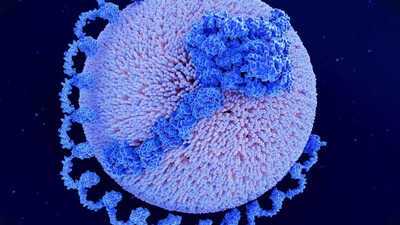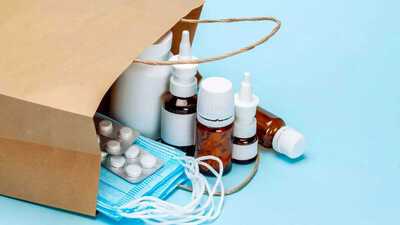Cholesterol often gets a bad reputation, but the truth is more complex. It is a natural substance found in your blood that your body needs to build cells, make hormones, and support vital functions. In fact, every cell in your body contains cholesterol, and without it, your body wouldn’t work properly.
The problem begins only when “bad” cholesterol builds up in your arteries. Over time, this buildup, known as plaque, makes blood vessels narrow and stiff. That raises the risk of serious problems such as heart disease, stroke, or heart attack. High cholesterol is considered one of the major risk factors for cardiovascular disease, the leading cause of death worldwide.
Despite its importance, cholesterol is surrounded by confusion. Some people believe all cholesterol is harmful, while others assume diet has no effect at all. These myths often cause people to either panic unnecessarily or ignore genuine risks.
Here are some of the most common myths about cholesterol, and the facts you should know to keep your heart healthy.
Myth 1: All cholesterol is bad for you

Not true. Your body needs cholesterol to function properly. It travels through the blood on proteins called lipoproteins. There are two main types:
LDL (low-density lipoprotein): Often called “bad” cholesterol because too much of it leads to plaque buildup in arteries.
HDL (high-density lipoprotein): Known as “good” cholesterol, it carries cholesterol back to the liver, where it’s removed from the body.
A balance of both is key; too much LDL and too little HDL raises your risk for heart problems.
Myth 2: I would feel it if I had high cholesterol
High cholesterol usually has no symptoms. Most people don’t know they have it until serious problems occur, such as a heart attack or stroke. That’s why doctors recommend checking your cholesterol at least once every five years. In rare cases, people with very high cholesterol may develop xanthomas, yellowish fatty deposits on the skin.
Myth 3: Eating foods high in cholesterol doesn’t affect my levels

Diet plays a role, but it’s not just about cholesterol in food. Many cholesterol-rich foods, like red meat, butter, and cheese, are also high in saturated fat, which raises LDL levels. To protect your heart:
Myth 4: There’s nothing I can do to change my cholesterol
Lifestyle changes make a big difference. You can lower your cholesterol by:
Myth 5: I don’t need medicine; diet and exercise are enough

While healthy habits help many people control cholesterol, others may still need medication. Statins and other medicines are often prescribed if you:
In such cases, medicine plus lifestyle changes give the best protection.
The problem begins only when “bad” cholesterol builds up in your arteries. Over time, this buildup, known as plaque, makes blood vessels narrow and stiff. That raises the risk of serious problems such as heart disease, stroke, or heart attack. High cholesterol is considered one of the major risk factors for cardiovascular disease, the leading cause of death worldwide.
Despite its importance, cholesterol is surrounded by confusion. Some people believe all cholesterol is harmful, while others assume diet has no effect at all. These myths often cause people to either panic unnecessarily or ignore genuine risks.
Here are some of the most common myths about cholesterol, and the facts you should know to keep your heart healthy.
Myth 1: All cholesterol is bad for you
Not true. Your body needs cholesterol to function properly. It travels through the blood on proteins called lipoproteins. There are two main types:
LDL (low-density lipoprotein): Often called “bad” cholesterol because too much of it leads to plaque buildup in arteries.
HDL (high-density lipoprotein): Known as “good” cholesterol, it carries cholesterol back to the liver, where it’s removed from the body.
A balance of both is key; too much LDL and too little HDL raises your risk for heart problems.
Myth 2: I would feel it if I had high cholesterol
High cholesterol usually has no symptoms. Most people don’t know they have it until serious problems occur, such as a heart attack or stroke. That’s why doctors recommend checking your cholesterol at least once every five years. In rare cases, people with very high cholesterol may develop xanthomas, yellowish fatty deposits on the skin.
Myth 3: Eating foods high in cholesterol doesn’t affect my levels

Diet plays a role, but it’s not just about cholesterol in food. Many cholesterol-rich foods, like red meat, butter, and cheese, are also high in saturated fat, which raises LDL levels. To protect your heart:
- Limit foods high in saturated fats.
- Eat more fiber-rich foods such as oats, beans, and vegetables.
- Choose healthy fats like avocados, nuts, and olive oil.
Myth 4: There’s nothing I can do to change my cholesterol
Lifestyle changes make a big difference. You can lower your cholesterol by:
- Eating a balanced diet rich in fiber and unsaturated fats.
- Exercising regularly (150–300 minutes of moderate activity per week).
- Quitting smoking, since tobacco damages blood vessels and accelerates plaque buildup.
- Knowing your family history, if high cholesterol runs in your family, you may need more frequent testing.
Myth 5: I don’t need medicine; diet and exercise are enough
While healthy habits help many people control cholesterol, others may still need medication. Statins and other medicines are often prescribed if you:
- Have familial hypercholesterolemia (FH), a genetic condition causing very high LDL from a young age.
- Already have cardiovascular disease, such as narrowed arteries.
- Live with type 2 diabetes, which lowers HDL and raises LDL.
In such cases, medicine plus lifestyle changes give the best protection.
You may also like

India hands over light strike vehicles, critical medical equipment to Nepal

Simple '£14 risk' sees 300,000 drivers breaking the law this year

South Korea: Jailed ex-first lady Kim appears for special counsel questioning for 2nd time

This Morning star details heartbreaking family news after coming off air

Holiday horror in Bahamas: 63-year-old American tourist severely injured in shark attack while spearfishing; flown to US





